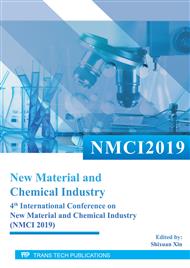p.251
p.257
p.265
p.272
p.279
p.285
p.290
p.299
p.306
Effect of Inner Cavity’s Gas Flow Rate on the Extrusion Forming of Plastic Micro-Pipe
Abstract:
During the manufacture of plastic micro-pipe, a certain volume of gas should be properly injected into the inner cavity to overcome the collapse and adhesion problems. In this work, the extrusion forming of plastic micro-tube under the role of inner cavity’s gas were numerically studied. At the same time, the effect of inner cavity’s gas flow rate on the extrusion deformation of plastic micro-pipe was also numerically investigated by using the finite element method. A kind of 2D two-phase fluid geometric model and finite element mesh were established and some reasonable boundary conditions and material parameters were imposed. Under a fixed volume flow rate of melt, different flow rates of inner cavity gas were imposed on the inlet of inner cavity’s gas. The extrusion deformation profile and deformation ratio of plastic micro-pipe under different flow rates of gas were all obtained. To ascertain the mechanisms of effect of inner cavity’s gas flow rate on the extrusion deformation of plastic micro-tube, the flow velocities, pressure, shear rate, normal stress, and the first normal stress difference of melt all obtained and analyzed. Numerical results show that with the increase of inner cavity’s gas flow rate, the radial velocity, axial velocity, pressure, shear rate, normal stress, and the first normal stress difference of melt all increase, which makes the extrusion deformation become more and more serious. In practice, reasonable controlling of the inner cavity’s gas flow rate is very important. In the other hand, it can adjust the size of extruded plastic micro-pipe.
Info:
Periodical:
Pages:
279-284
Citation:
Online since:
May 2020
Authors:
Price:
Сopyright:
© 2020 Trans Tech Publications Ltd. All Rights Reserved
Share:
Citation:


